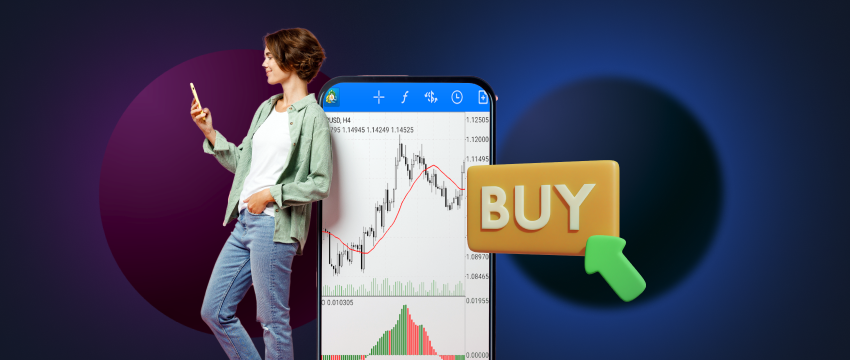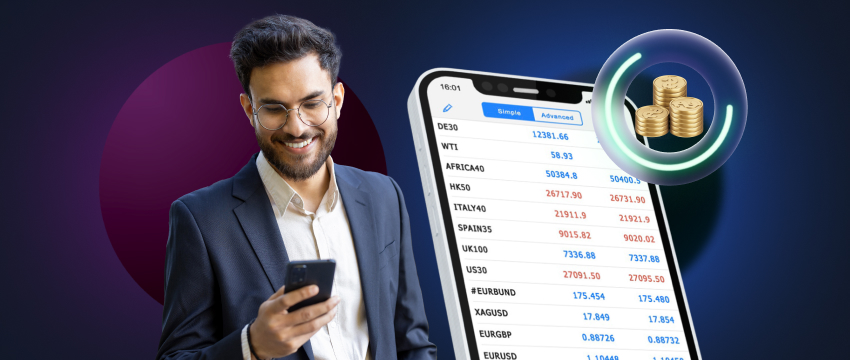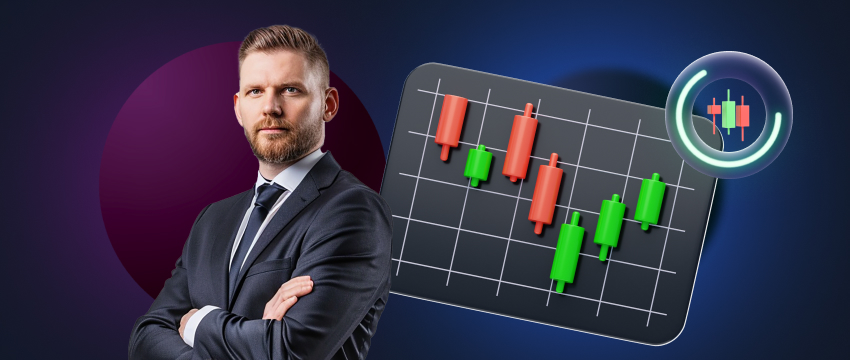Traders are looking to make a profit by speculating on the price movements of assets without having to own them. Engaging in CFD trading is a way to make this happen. CFD trading enables traders to capitalize on fluctuating markets, be they bearish or bullish, as a means of earning gains. Positions may be opened and closed multiple times within a trading day. Depending on the trading strategy adopted by the trading, increasing the potential for making a substantial return on investment.
Understanding the fundamentals of CFD trading
Before addressing the question of what happens when you buy or sell a CFD. Let’s first establish a proper understanding of what a Contract for Difference is. CFD is a financial derivative. With it, a trader can speculate on the price movements of an underlying asset, be this indices, currency pairs, stocks, etc. They can do this without having to own the asset, instead only getting exposure to its price fluctuations.
Other notable characteristics of a CFD:
- The CFD takes on the form of an agreement. Between a buyer and a seller, usually a CFD broker and a trader.
- When trading CFDs, the trader will go long if they predict the asset’s price will rise. Also, go short if they think their price will fall.
- CFDs are renowned for being highly leveraged, enabling the trader to open larger positions with a minimum sum of capital. In other words, the trader can engage with multiple markets. At a fraction of the amount required for the trades.
- The leverage ratio is usually expressed as a ratio of multiples. And is a measurement of total exposure compared to the capital required. In other words, the ratio establishes the size of your trade (your position) versus your funds.
In recent years, CFD trading has largely become subject to regulatory frameworks from different jurisdictions across the globe. In those countries where trading CFDs is permitted. Regulations may differ in terms of limits on leverage. Client fund protection, negative balance protection, and access to specific tradeable assets. Traders must always be mindful of and adhere to the regulatory requirements applicable to their trading activities.
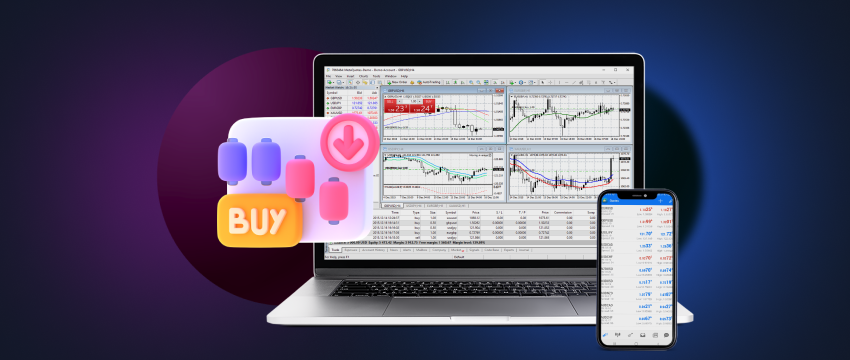
Buying and selling CFDs
In the process of buying and selling a CFD. Traders typically become parties to a contract to profit from the potential price increase of the underlying asset. But how does this work in practice?
- Step one: the first step usually entails opening a CFD account. Traders may choose to start with a demo trading account. Get the hang of CFD trading before moving to live markets.
- Step two: this step sees the trader choosing the market they want to trade. This ranges from 주식, 원자재, 금속, indices, 외환, etc.
- Step three: the third step usually involves the trader determining position size. Impacting this decision are factors like budget, the use of leverage, market sentiment, etc.
- Step four: in this step, the trader will decide whether to buy or sell. The decision was made based on speculated price movements. Traders will typically buy if they anticipate the market will rise in value and sell. If they think it will fall.
- Step five: the fifth step will see the trader decide how many CFDs to buy or sell. They also apply risk management measures like stop-loss orders, to mitigate the risk of losing their capital. The trader will then proceed to open the position.
- Step six: at step six, the trader will monitor the position in real time. At such time that the trader chooses to exit the trade, the trader will either earn a profit or make a loss.
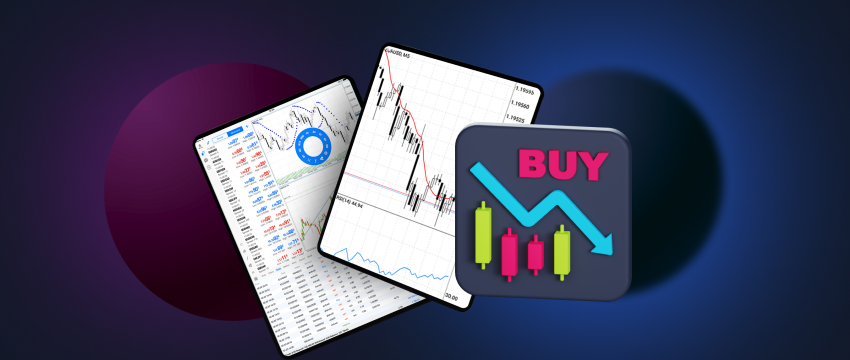
Using a demo trading account
For a CFD trader at the start of their journey, acquiring the skills and expertise required to navigate the markets requires practice and learning. One of the ways a trader achieves this is by signing up for a demo trading account before moving to live trading.
They do this because the demo account offers a way for the trader to follow the six steps mentioned above using virtual funds, thereby not putting their own money at risk.
Having the ability to acquire this experience is an incredible learning opportunity and gives the CFD trader a chance to get a feel for what CFD trading will look like.
Navigating a real-life trading environment that mimics live market conditions, the trader can implement different strategies using technical analysis as the basis, and then assess outcomes to identify relevant strengths and weaknesses in their trading plan.
Additionally, a demo trading account also gives a trader the time to gain the confidence required to manage the risks inherent in CFD trading, of which there are many. In fact, many of the 8/10 traders are said to have lost all of their money when engaging in CFD trading.
Alternative forms of learning
CFD traders typically engage in some form of ongoing learning to ensure they stay at the top of their game. This stands true regardless of a trader’s years of experience.
The reason for this is that the CFD market is a dynamic one, evolving continuously and staying ahead of trends, technological advancements, and general news and economic releases, which requires investment in some form of trading education.
And by investment, we don’t mean money. Instead, we mean time. Traders today are incredibly fortunate in that they can access an unfathomable volume of resources all across the internet. This includes e-books, podcasts, videos, blogs, webinars, and seminars, to name just a few.
Saying that, ensuring you are acquiring accurate insights, ensure that you consume information from credible professionals and renowned experts in this domain. There is no 100% successful, get-rich-quick scheme to make money from trading, and anyone promising this is probably lying. Instead, ensure you spend the time learning the fundamentals, get the practice needed to boost your skills, and consume information that will widen your scope of knowledge.
Selecting a broker
One of the most important components of CFD trading is aligning with a reputable broker who provides friendly, 24/5 customer service and full-service offerings to ensure a high-caliber trading experience. A top-tier broker is also one who seeks to expand your trading knowledge, to help you hone your skills and increase your potential for making a profit from CFD trading.
One such broker is T4Trade which delivers a wide variety of resources related to trading via their T4Trade Academy. Traders can access quality insights and information from an expert team of engaging analysts and researchers. Aside from e-books, guides, videos-on-demand, podcasts, and webinars, T4Trade also offers an innovative economic calendar and daily (Monday – Friday) commentary via Live TV.
Additionally, traders can also access hundreds of financial instruments across 6 asset classes like stocks, forex, futures, metals, commodities, and indices. This is complemented by features like competitive spreads, flexible leverage, quick withdrawals and deposits, and speedy execution of trades. The T4Trade MT4 trading platform also offers traders a user-friendly trading system full of useful trading tools and functionalities to optimize their trades and increase the potential for maximizing profits.

위기 관리
On a final point, in the process of buying and selling CFDs, we remind you of the importance of adopting effective risk management techniques to protect your capital. As we’ve reiterated several times, CFD trading is incredibly risky, being as sensitive as it is to market volatility and the potential for over-leveraging.
Gain a robust understanding of how to trade CFDs before executing live trades. Ensure you apply stop-loss and take-profit orders to mitigate the risk of asset prices moving in adverse directions, impacting potential returns or, at worst, seeing you lose all your capital.
Disclaimer: This material is for general informational and educational purposes only and should not be considered investment advice or an investment recommendation. T4Trade is not responsible for any data provided by third parties referenced or hyperlinked in this communication.
